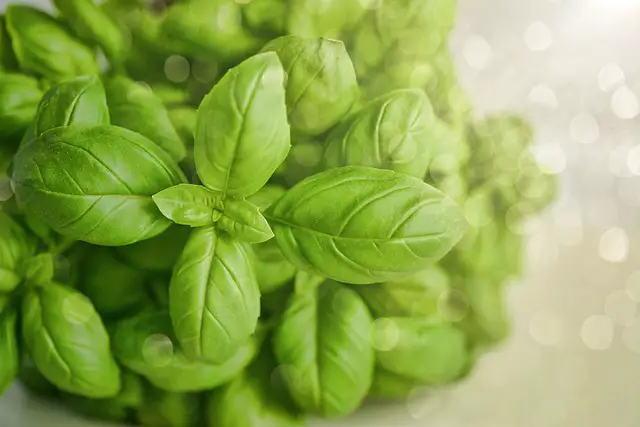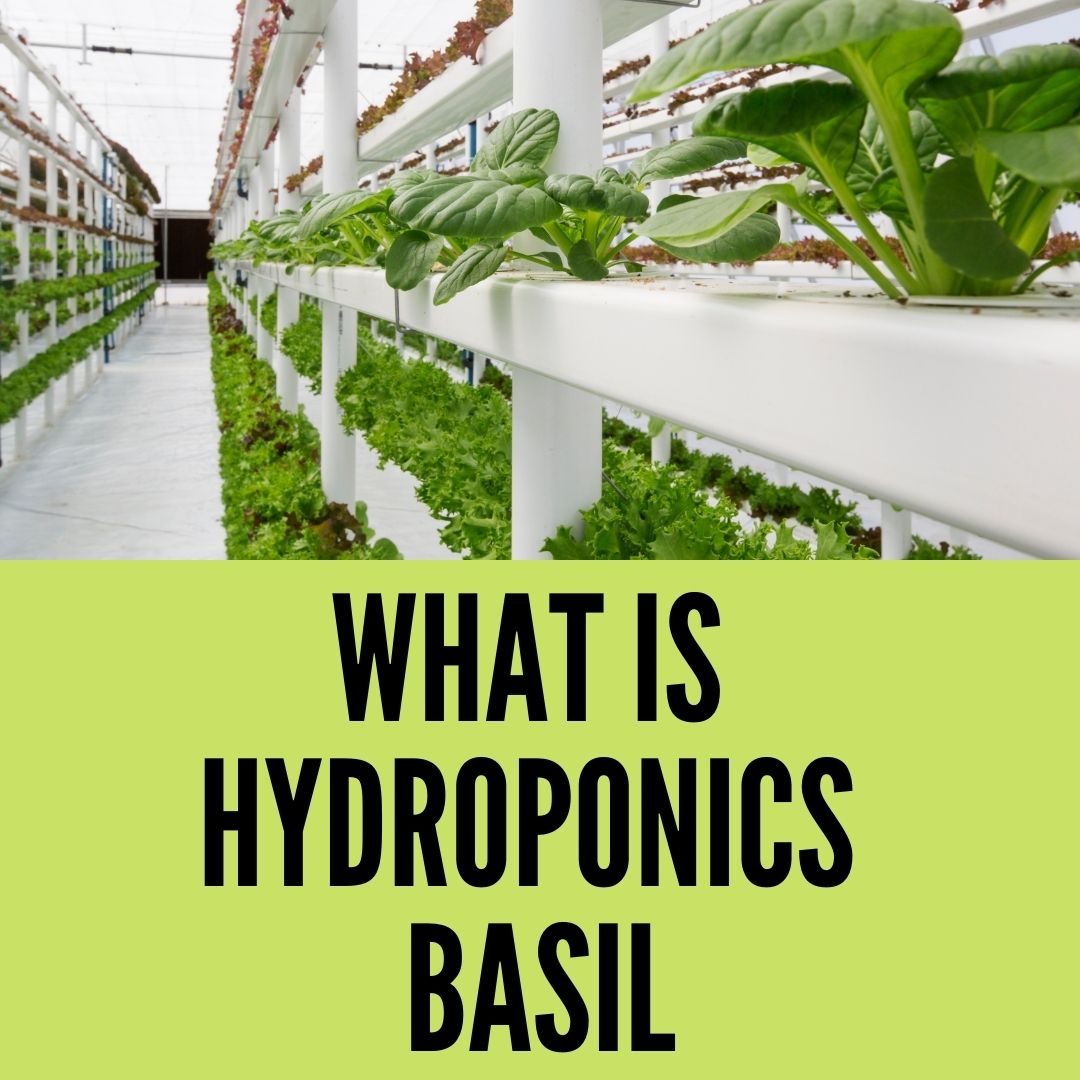Basil is a herbaceous plant grown mainly as an aromatic plant. Originally from tropical Asia, it then spread throughout the Mediterranean basil. There are different varieties of basil. The best known is Ocimum basilicum, which includes common basil and its many well-known cultivars (Great Green Basil, Thai Basil, Purple Basil, etc.).
We can therefore group all the varieties of basil into two very distinct categories:
1. Annuals: Ocimum basilicum
2. Perennials, or perennials: Ocimum kilimandscharicum (Kenyan basil) and Ocimum tenuiflorum (holy basil, tulsi) are the best known.
Today we will be talking about how to grow hydroponic basil, the whole process, and some important frequently asked questions about basil too.
The life cycle of basil
When basil begins to flower, it no longer produces leaves. It must be pruned regularly to delay flowering.
When it comes to cultivation, all varieties of basil like hot, sunny areas. In our temperate climates, it will therefore have a life cycle in 3 stages:
The growth stage
this is the first stage in the life of basil, the production of leaves is important here. This is the best time to harvest crops for consumption.
The transition stage
leaf production is slowed down, there is much less time available for consumption. It is at this time that we can make cuttings.
The stage of production
No more leaves are produced,o a pretty flowering.
Annual basil varieties will die after flowering. It will therefore be necessary to sow seeds anew each year. You can collect them directly from the flowers once they have dried.
The perpetual varieties of basil, on the condition that they are placed in a room with a minimum temperature of 10°C in winter, will go into dormancy to resume their growth in the spring.
If you are in an area with a well-defined cold season, it becomes interesting to grow it indoors under horticultural lighting during the less favorable seasons and take advantage of the summer heat to produce it outside.
How to grow hydroponic basil?
The root system of basil is very vigorous, it is important to provide it with a large reservoir.
Basil adapts to any kind of hydroponics. You still need to provide it with a fairly large tank because it is a herb that has a very vigorous root system. Improper watering is one of the main causes of the loss of your basil. In pot culture, the soil must be both humid and not very saturated with water.
The drought is fatal to them. This is where all the difficulty lies. That is why in a hydroponic culture you will no longer have to worry about these waterings. The plant drinks what it needs when it needs it.

Materials required
To successfully grow basil in hydroponics, you need:
- Hydroponic system
- Horticultural lighting (for indoor cultivation)
- Hydroponic fertilizers
- pH up or pH down
- pH meter
- Conductivity meter (EC-meter)
Hydroponic basil from seeds or cuttings?
Hydroponic basil can be grown from seeds or cuttings.
Growing from seeds is easy. Scatter the basil seeds over a moist hydroponic substrate. Light the seeds. The ideal temperature for germination is between 18 and 23 degrees. Germination takes 4 to 10 days. After rooting, transfer the basil to your hydroponic system with the substrate.
Growing from cuttings is a great way to propagate your hydroponic basil. Simply cut off the cuttings and put them in water or a growing medium. After a few days, the basil will take root and can be transplanted into a hydroponic system.
The simplest, but also the most expensive option is to buy a basil plant. Rinse the soil extra thoroughly and transfer the plant into your system. No soil, no pathogens, and no pests must get into your system.
Which basil grows in hydroponics?
Basil comes in countless shapes, colors, and flavors. The good news: All basil varieties grow hydroponically. If you want to harvest basil several times a week, the basil plant should grow quickly and be productive.
High-yielding basil
- Genovese
- Aroma 2
- Nufar
Exotic basil varieties
- Thai basil
- Cinnamon basil
- Lemon basil
- Greek basil
- Indian basil
Perfect for the indoor hydroponic garden
- Elindra
- Dwarf basil
- Genovese Compact Improved
Red basil varieties
- Red Ruby
- Dark opal
- Moulin Rouge
- Purple Delight
Which hydroponic system for basil?
All hydroponic systems are suitable for basil. Basil is very easy to care for and has few requirements. For example, it is possible to grow basil in a bottle.
Deepwater culture or NFT systems are best for hydroponic basil. Deepwater culture is recommended for starters. This is particularly simple and inexpensive to purchase and use.
Basil needs regular pruning and harvesting in hydroponics. The plant should therefore be easily accessible.
The right air and water temperature
In hydroponics, not only the air temperature but also the water temperature is crucial. For both, there is an optimum in which the hydroponic basil thrives best. High yields are also possible outside of the optimum.
Basil in a bottle with a hydroponic system
The ideal air temperature for basil is between 21 and 26 degrees during the day. For healthy growth, the temperature should not fall below 13 degrees and not rise above 35 degrees. At night, the temperature should drop by 5 to 10 degrees.
A water temperature between 21 and 24 degrees is optimal for hydroponic basil. The temperature of the nutrient solution should not fall below 15 degrees and not rise above 25 degrees.
How much light and what lighting?
No plant will grow without light, let alone basil. As an indoor or outdoor gardener, you must therefore consider the following:
Outdoors, basil loves direct sunlight. Therefore, make sure that your hydroponic basil is positioned in the sunlight.
Indoors, a plant lamp is sufficient for vegetative plant growth. However, if you want a more intense taste, you should choose a full spectrum to grow light. The downside, however, is that after a while your hydroponic basil will start flowering and taste bitter.
Light your hydroponic basil for 14 to 16 hours a day for maximum yield. Also, keep a dark phase of 8 hours.
What pH and EC does hydroponic basil need?
Every gardener in hydroponics knows pH and EC. Both are crucial for healthy plant growth and high yields. Check both values at regular intervals.
Basil grows best in hydroponics with a pH of 5.5 – 6.5. However, slight deviations from 0.5 do not harm the plant.
An EC value of 1.0 – 2.0 is the right choice in most cases. However, the exact EC value depends on the age of the plant, the light intensity, and the environment.
What nutrients and fertilizers for hydroponics basil?
In addition to all the essential plant nutrients, basil needs increased amounts of nitrogen, magnesium, and calcium.
hydroponic fertilizer
As a hydroponic fertilizer, a one-component fertilizer is sufficient for vegetative growth. Always use a good quality hydroponic fertilizer such as General Hydroponics Maxi Grow.
Pruning and harvesting hydroponics basil
For your hydroponic basil to grow nice and bushy and produce a lot of yields, you need to prune the basil plant properly.
Harvesting and pruning basil in hydroponics
If you only pluck the leaves, the shoots will die and the plant will be weakened. Use scissors to cut off the stem above the second leaf node. This initiates the lateral growth of new leaves. One to two pairs of leaves per branch should remain.
Harvesting is done in the same way. It takes about 3-10 days from seed to germination. After about 2-3 weeks roots form and you can use basil in a hydroponic system. It then takes about 3 – 4 weeks until the harvest.
If you start with a cutting, you can significantly reduce the time to harvest!
Top 7 Best Hydroponic Nutrients For Vegetables
Preparing the nutrient solution for basil
Add water and fertilizer to the tank until an EC of about 0.8 is reached.
Then adjust the pH so that it is between 5.5 and 6.0.
After two weeks of cultivation, it will be necessary to gradually increase the quantity of fertilizer to finally obtain an EC of 1.8 at most.
Keep your pH acidic, between 5.5 and 6.0 throughout the grow.
Caring and harvesting your basil in hydroponics
There is a technique for pruning basil correctly and enjoying it for several months.
Simply cut the tallest stems above a node. The node is the place where the leaves and the future branches are formed. By cutting like this, each branch will split into two new branches. On the other hand, it is advisable to leave the oldest and largest leaves, they help the plant to reform its new stems more quickly thanks to photosynthesis.
By following this technique, the number of branches on your basil will multiply and the harvests will be even more impressive each time. One last thing about basil pruning, it is very important if you want to delay the formation of flowers as much as possible. Indeed, we have seen that in the life cycle of basil, flowering is the last stage. By pruning regularly, you, therefore, extend the life of your basil.
Growing hydroponic basil outdoors without horticultural lighting
Growing basil outdoors is possible as long as temperatures allow. To obtain a good development of the plants, light exposure is an essential criterion. If you place your basil in a shady area, it will still grow, but extremely slowly. This is why a good exposure is very favorable to it.
In summer, place it in full sun. Protect your hydroponic tank well from the sun’s rays to limit the development of algae. When the temperatures no longer allow you to keep your basil outside, choose a window sill facing south preferably.
